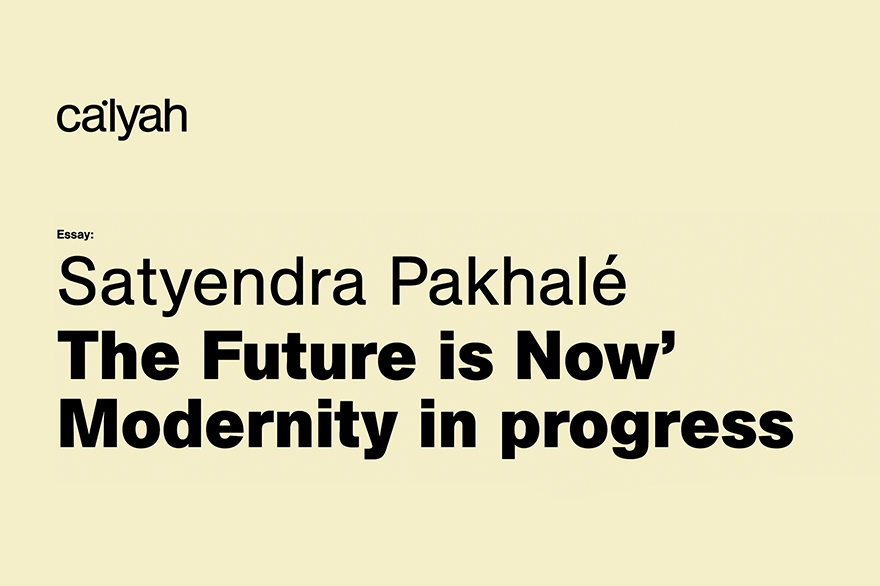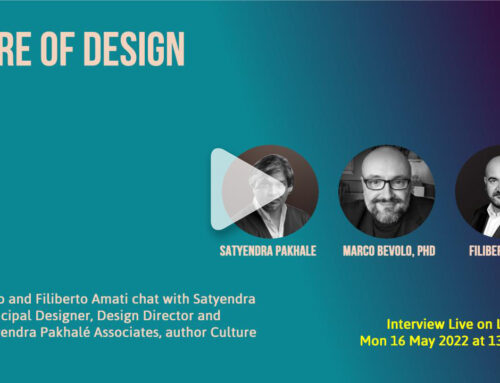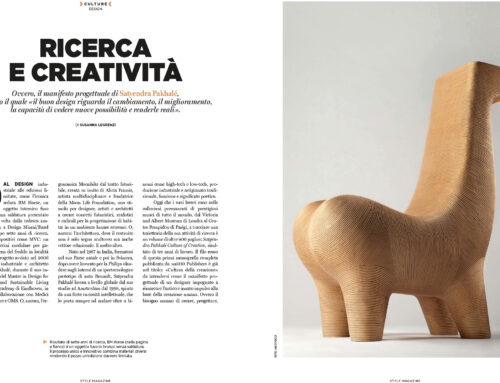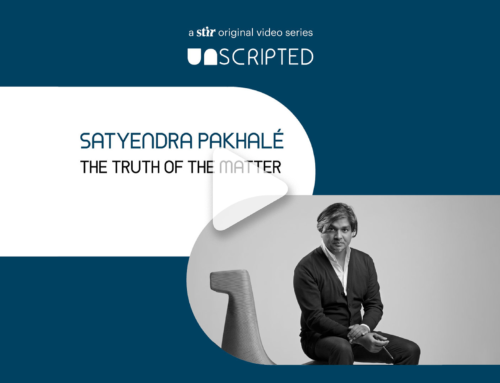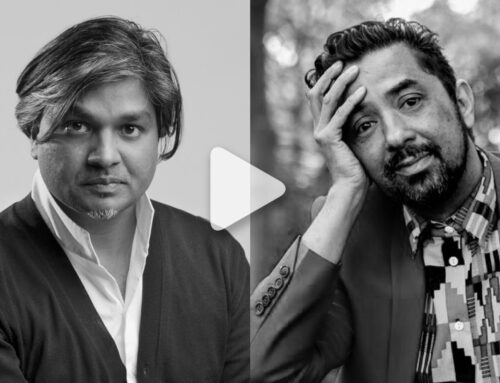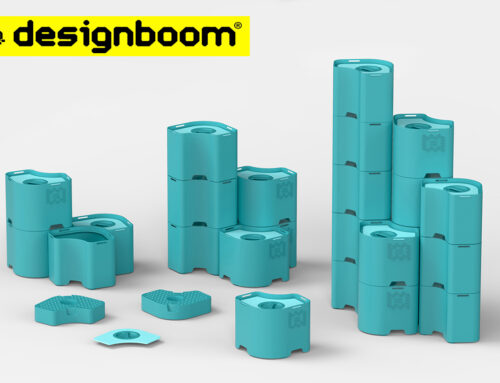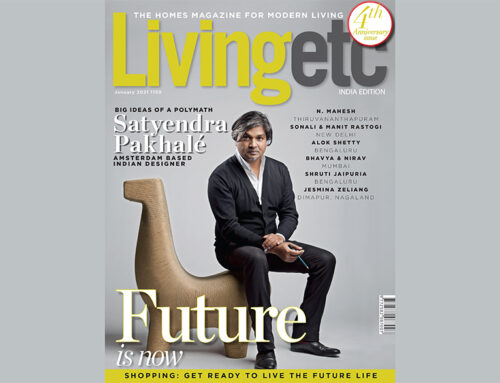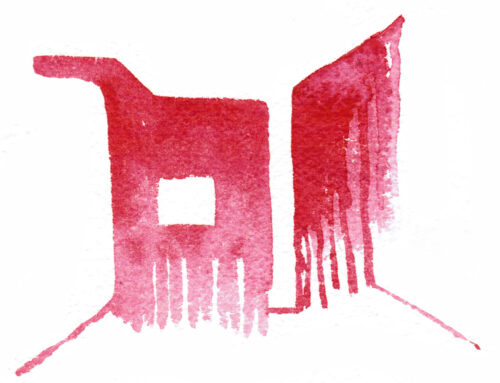Satyendra Pakhalé is a member of the Ca’lyah Designers Collective and author of Satyendra Pakhalé: Culture of Creation, published by nai010 publishers, Rotterdam, NL
How do we define the future? When does it begin? Is the future really coming? Or is it already here? Is there even a way to know? If you take a moment to reflect on these questions, you realize how amorphous the future really is. For many of us, it’s a distant notion. Something vague, unknown, uncertain, and oftentimes a cause for anxiety.
Design is fundamentally about the future. It’s about newness of possibility and it offers alternatives to the present reality that are hopefully more human, more sensorial and above all more just. Irrespective of the current myopic vision of many world leaders, the overall human story is a story of optimism. As R. Buckminster Fuller said, “The best way to predict the future is to design it.”
To understand the future, it is wise to look at the past and especially to the previous pandemic, the so-called “Spanish flu” of 1918-1919. In the Swedish city of Östersund, to point to one example, the social inequity in the city meant the flu hit even harder than elsewhere. The local newspaper Östersunds-Posten swiftly moved from reporting on the pandemic to helping organize relief. They published pleas for food, clothing and money and offered the office space as storerooms. People of various political convictions and affiliations started cooperating in the city otherwise driven by the class divisions of early industrial society. The Swedish state itself had proven inadequate during the crisis. Responding to the will of the people after the pandemic, the state made steps toward a cooperative approach to social reform. Causes such as housing for the poor and resolving inadequate nutrition were adopted into the political agenda, leading to Sweden’s renowned welfare state. The country’s robust welfare policies and the events of autumn 1918 are clearly linked.

Similar phenomena occurred throughout the rest of Europe. During the initial decades of the 20th century, the world was a very different place. There was no comprehensive thinking with regards to public healthcare. The substandard living conditions of the poor predisposed them to the flu. The pandemic claimed up to 100 million lives across the globe. The disadvantaged population suffered most, but the elites were not spared either. This catastrophe led to the realization that society’s problems were not individual but collective. The first steps were laid by the Russian vision of medicine as a holistic service covering the biological, psychological and sociological aspects of life. By the1920’s most European governments had embraced the concept of universal healthcare and things started to look more like they do today in the continent.
These social developments had curious parallels in architecture and design. The basic principles of modern architecture, with its obsession for white walls, large windows, flat roofs, terraces and balconies bringing air and light indoors is a direct response to the pandemic and tuberculosis. A century later, post-1918-pandemic architecture is still in place as the contemporary aesthetic. With the industrial technologies of the era, the modernist architects and designers of the early 20th century envisioned new ways of living that have become a norm today. Their vision shaped the way we still live in most of the urbanized parts of the world.
Just as the previous pandemic birthed new approaches to architecture, it is now time for another paradigm shift. We need to create spaces that inspire a sense of belonging, that are ‘conducive to social cohesion’, that expand beyond pre-defined boundaries and labels and offer humans a rich landscape in which to exist. We should ask ourselves how design can foster this cohesion.
Design is the shaper of society and the foundation that allows people to live fully. It is a source of knowledge, even when it remains hidden. Design can serve as the foundation of how we live – if it’s created with a deep understanding of life’s value. At its very finest, design can even create joy. Good design is about change, improvement, the ability to see new possibilities and make them real. No change can be achieved unless we “…act as if it were possible to radically transform the world. And [we] have to do it all the time,” as the legendary philosopher Angela Davis reminds us.
Society’s ills have become more evident with the current pandemic, and we have been offered an opportunity to do something to solve them. This moment in time could be one of those rare turning points in the history of humanity where a ‘movement of positive transformation’ takes hold. The future is indeed now.
For the past century or more, cities and urban spaces have been designed to separate living from working, but we are likely to return to a preindustrial concept of work and life in a single place or connected space. A different type of city is likely to emerge, where the public space could have imaginative recreational and work-related purposes. Streets could be reclaimed as public spaces. Offices and complexes are likely to evolve more as community-shared facilities than typical corporate zones. Affordable housing could reappear in city centres.
History tells us that such developments will not be sustainable unless basic living conditions are provided in addition to just and fair opportunities for all. The current global crisis is primarily about human dignity. Unless we take care of all sections of society, particularly the economically and socially marginalized, nobody is really safe. Thinking of design and its potential contribution to humanity with a courageous vision for the future is a primary necessity once again.
Far from being a frivolous supplement to our lives, design is at the root of how we live. Through it, we can envisage a new world and rebuild society to create the future that we — as a collective — wish to experience.
About Satyendra Pakhalé
Multifaceted award-winning designer Satyendra Pakhalé established his practice SPA –Satyendra Pakhalé Associates in 1998 in Amsterdam, The Netherlands. He was trained both in India and Switzerland and is active in the field of design, art and architecture. His design work is an act of unity going beyond any binary such as high-and low-tech, industrial production and traditional crafts, functionality, and poetic significance. Pakhalé explores diverse cultural roots and creates contemporary objects and architectural spaces with the awareness that being a designer means being socially and culturally responsible. Through a series of award-winning design projects for leading clients and industries, the practice has developed a worldwide reputation for designing diverse innovative typologies, pushing the limits of technology and materials. Recently a comprehensive monograph ‘Satyendra Pakhalé: Culture of Creation’, sponsored by Ca’lyah Design, was published by nai010 publishers, Rotterdam, NL.
He has lectured throughout the world on platforms such as CeBIT Germany, Casa Brasil and Future Design Days Sweden. His works are in permanent collections at prestigious museums throughout the world, among which the Victoria and Albert Museum London, Stedelijk Museum Amsterdam, Montreal Museum of Fine Arts and Centre Pompidou, Paris.
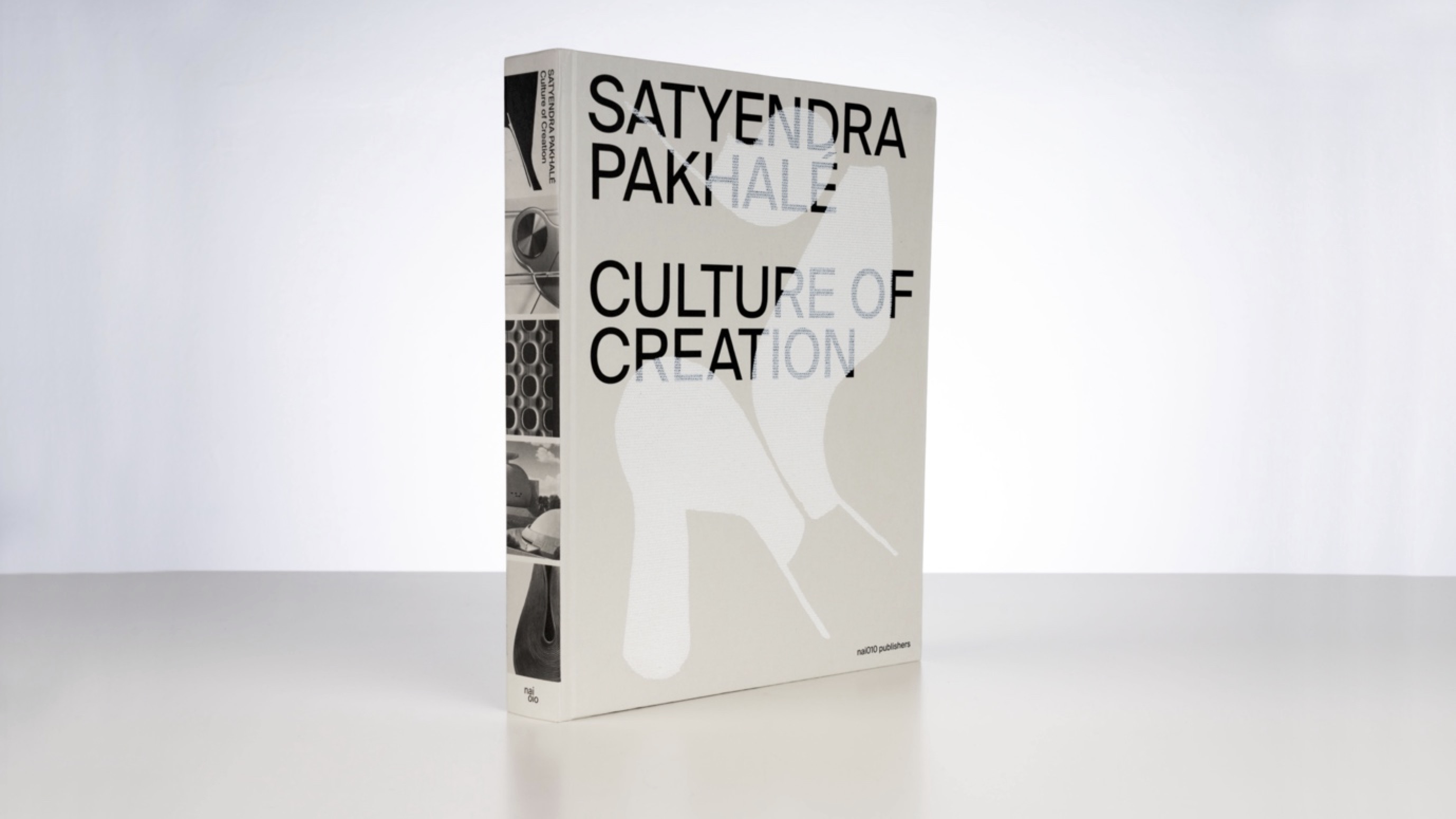
Disclaimer: Views expressed in this essay are those of the author and do not necessarily represent those of Ca’lyah.
The full article read here
